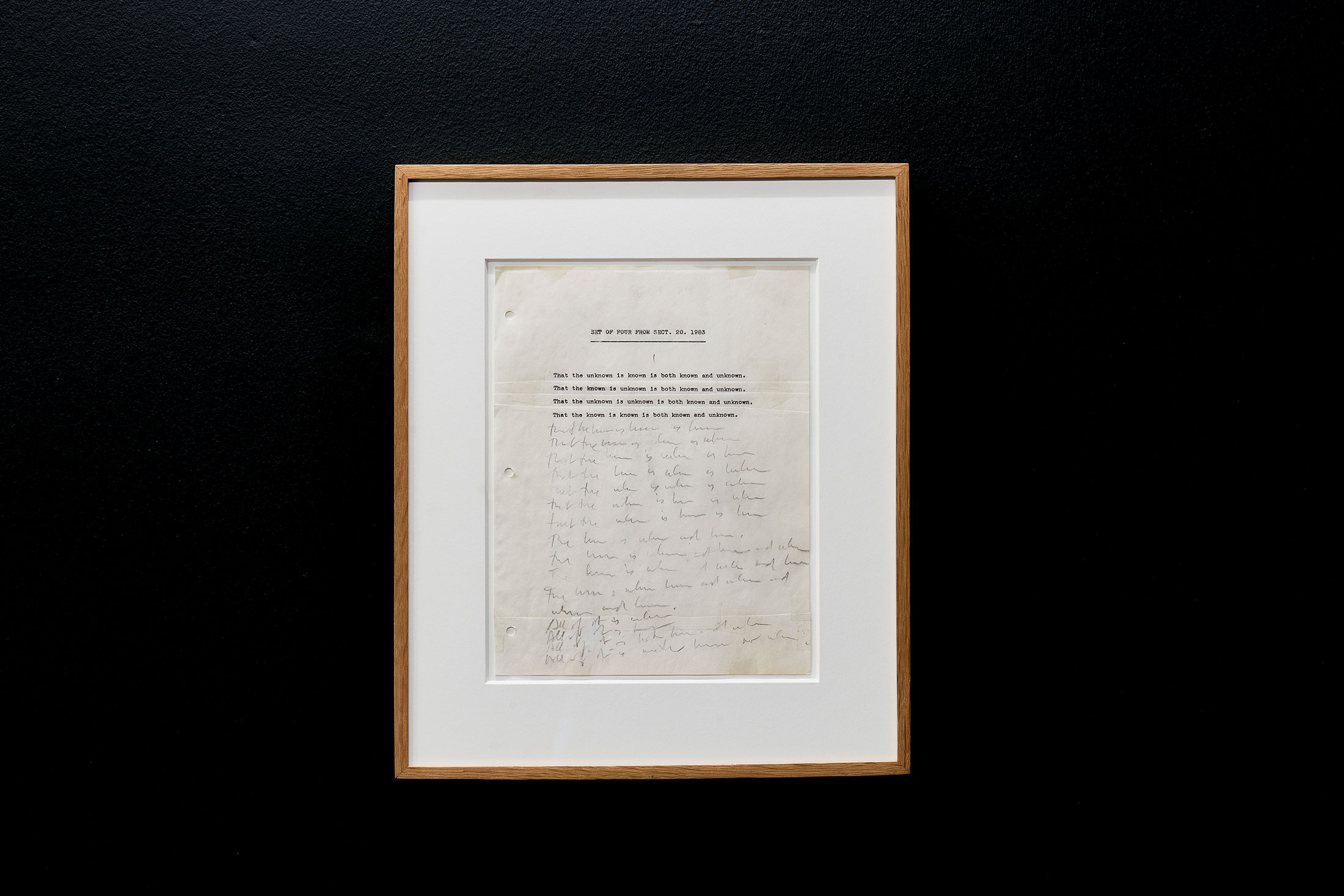Ian Wilson

Set of Four From Sect.20 is an uniquely tactile offering from an artist whose accumulated traces are primarily composed of simple, typed sentences. Its designation as an art object is uncertain; the text initially included in an invitation to the artist’s Oral Communication and Discussion Series at Van Abbemuseum, Eindhoven on 3 June, 1983. Multiple sheets of paper have been taped together to form a repetition of the printed sentence. These sentences are then repeated in handwriting. The pages appear taken from one of his Section works, a project conceived in 1971, in which the artist printed editioned books that featured single words or phrases repeated throughout. These modest manuscripts were pivotal in Wilson's conception of ‘pure awareness’ and are the only objects the artist produced from 1968 until his death in 2020. “Good conceptual art leaves nothing,” he wrote. “The reader is suspended, and it is from this vacuum that true consciousness emerges.”
b.1940, Durban; d.2020, New York
“Conceptual art is not about ideas,” the late Ian Wilson wrote. “It is about the degree of abstraction of ideas.” Wilson left South Africa in 1960 when he was twenty years old. He became a contemporary of Joseph Kosuth, Art & Language, and Lawrence Weiner. “If you have one more of those invisible artists out here, you’re fired,” John Baldessari recounted Paul Brach having said after Baldessari invited Ian Wilson to the Cal Arts visiting artist programme. Ian Wilson was pivotal in the dematerialisation of the art object, which marked the final chapter of the modernist narrative. Unlike his fellow Conceptualists, however, his intrigues were primarily mystical; the artist pursuing an unmediated truth. “The heart of consciousness is a state of being which is formless,” Wilson said with sage-like opacity. An art of concepts, he believed, was necessarily without matter, belonging not to physical space but to the province of the mind. This was non-objective art taken to its final form; thought without corresponding sign. From 1968, the artist began mentioning the word ‘time’ in a series of informal interactions, curious to see what might arise.